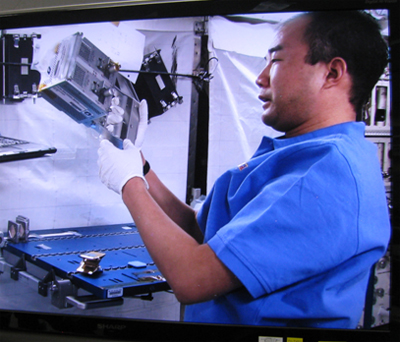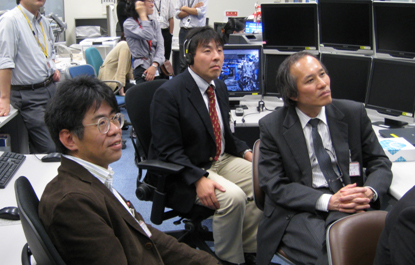This is an archive of information released in the past.
Disclaimer: It may contain broken links or outdated information. Some parts may not function in current web browsers.
*Visit https://humans-in-space.jaxa.jp/en/ for the latest information.

Experiment
- News
- Kibo Utilization Strategy
- Kibo Utilization Plan
- List of JAXA's Utilization Themes
- Experiment Facilities
- Space Environment Utilization
- Archive
Fish Scales Experiment Completed
* All times are Japan Standard Time (JST)
Investigation of the Osteoclastic and Osteoblastic Responses to Microgravity Using Goldfish Scales (Fish Scales)*, which has been performed using the Cell Biology Experiment Facility (CBEF) onboard Kibo, was completed.
Samples for the experiment (reproduction scales) were launched to the International Space Station (ISS) on the STS-132 mission (aboard the space shuttle Atlantis) on May 15, 2010.
The samples were cultured for four days in the CBEF in Kibo from May 17, 2010. The samples were then chemically fixed and stored in the MELFI. The experiment was completed 8:06 p.m. on May 20, 2010. Control experiments were also performed on-orbit (1G compartment of the CBEF) and on the ground (laboratory).
The past human spaceflights indicated that decrease in bone mineral density (bone loss) and bone weakening occur in astronauts who participated in long-duration space missions.
It is assumed that osteogenetic cell deterioration and osteoclast activities cause decrease in bone mineral density, or bone loss. However, some questions such as, "why such phenomenon occurs in space", and "how activity of each cell changes in space", have not been clarified yet.
The Fish Scales experiment uses scales of goldfish as a bone model because fish scale has both osteoclast and osteoblast cells. Furthermore, in order to examine the mechanism of bone loss in detail, the experiment uses reproduction scales, which cellular activity is much higher than typical scales.
On the ground, the team will perform sample analysis to measure cellular activities, determine gene expression, and examine hormones involved in the bone metabolism. The team will also conduct morphological analysis. The team will eventually study the interaction between osteoclast cell and osteogenetic cell, and inhibition effects of the medicine on bone resorption.
The samples will be returned to the ground aboard the space shuttle Atlantis (STS-132).
Special Message from Principal Investigator (PI)
Today, in-flight protocol of the Fish Scales experiment was completed. I thank people who have supported the experiment. We will perform sample analyses. I hope to share results of this unique experiment, which used "fish scales" as a bone model, with scientists around the world.

Astronaut Noguchi preparing the samples for the experiment

Jun Tabata, Associate Professor of Tokyo Medical and Dental University (left),
Nobuo Suzuki, Associate Professor of Kanazawa University (PI) (center),
and Atsuhiko Hattori, Professor of Tokyo Medical and Dental University (right)
monitoring the experiment, while Astronaut Noguchi was working on
the fish scale samples, from the User Operations Area (UOA) at TKSC
*All times are Japan Standard Time (JST)
| Copyright 2007 Japan Aerospace Exploration Agency | Site Policy |